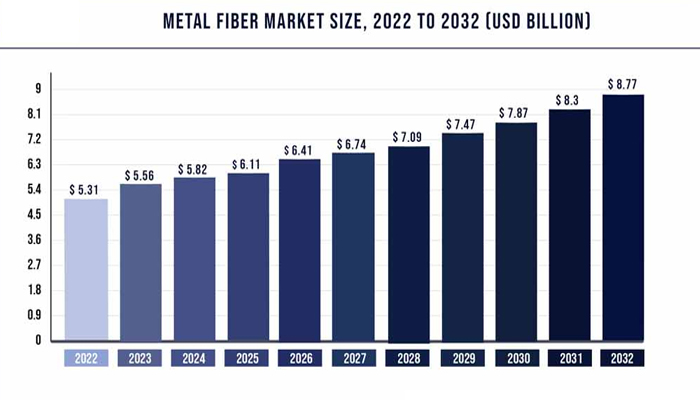The steel fiber market is a rapidly growing industry, driven by the increasing demand from various applications. We provide a review of the steel fiber market by type, application, and manufacturing process.
Steel Fiber Market by Type
The steel fiber market can be broadly classified into three types: carbon steel fibers, stainless steel fibers, and alloy steel fibers.
Each type has its unique properties and applications, and the market is expected to witness significant growth due to the increasing demand from the aerospace and automotive industries.

Steel Fiber Market
The global steel fiber market size was valued at USD 1.5 billion in 2020 and is expected to reach USD 2.5 billion by 2027, growing at a CAGR of 7.1% during the forecast period.
The market is driven by the increasing demand from the aerospace, automotive, and construction industries, which require high-strength, lightweight materials.
Manufacturing Process
The manufacturing process of steel fibers involves the drawing and pulling of steel wire, which is then transformed into fibers through a series of processes.
The most common manufacturing process is the electro-mechanical process, which involves the use of an electric current to draw the steel wire into fibers.

Example:
The aerospace industry is a significant consumer of steel fibers, which are used in the production of lightweight composites for aircraft structures and engine components.
The use of steel fibers in aerospace applications has been growing at a CAGR of 8.5% over the past five years, and this trend is expected to continue in the coming years.
Conclusion:
In conclusion, the steel fiber market is a rapidly growing industry, driven by the increasing demand from various applications. The market is expected to witness significant growth in the coming years, driven by the increasing demand from the aerospace, automotive, and construction industries.
The manufacturing process of steel fibers involves the drawing and pulling of steel wire, which is then transformed into fibers through a series of processes. The market is expected to continue growing at a significant rate in the coming years, driven by the increasing demand from the aerospace, automotive, and construction industries.
